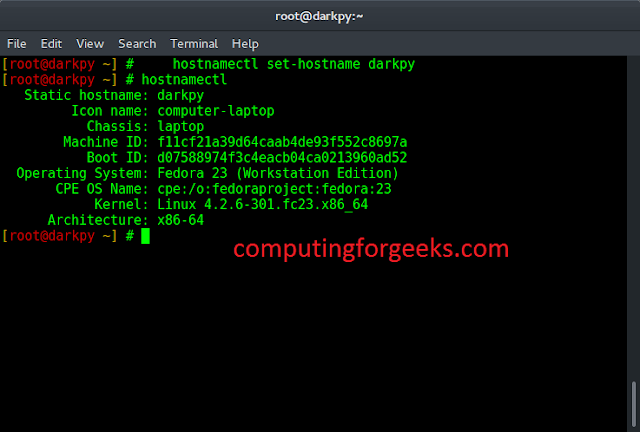Given an array arr[] of size N, the task is to find the length of the longest subsequence consisting of distinct elements only.
Examples:
Input: arr[] = {1, 1, 2, 2, 2, 3, 3}
Output: 3
Explanation:
The longest subsequence with distinct elements is {1, 2, 3}
Input: arr[] = { 1, 2, 3, 3, 4, 5, 5, 5 }
Output: 5
Naive Approach: The simplest approach is to generate all the subsequences of the array and check if it consists of only distinct elements or not. Keep updating the maximum length of such subsequences obtained. Finally, print the maximum length obtained.
Time Complexity: O(2N)
Auxiliary Space: O(1)
Efficient Approach: The length of the longest subsequence containing only distinct elements will be equal to the count of distinct elements in the array. Follow the steps below to solve the problem:
- Traverse the given array keep inserting encountered elements in a Hashset.
- Since HashSet consists of only unique elements, print the size of the HashSet as the required answer after completing the traversal of the array.
Below is the implementation of the above approach:
C++
// C++ program for the above approach#include <bits/stdc++.h>using namespace std;// Function to find length of// the longest subsequence// consisting of distinct elementsint longestSubseq(int arr[], int n){ // Stores the distinct // array elements unordered_set<int> s; // Traverse the input array for (int i = 0; i < n; i++) { // If current element has not // occurred previously if (s.find(arr[i]) == s.end()) { // Insert it into set s.insert(arr[i]); } } return s.size();}// Driver Codeint main(){ // Given array int arr[] = { 1, 2, 3, 3, 4, 5, 5, 5 }; int n = sizeof(arr) / sizeof(arr[0]); // Function Call cout << longestSubseq(arr, n); return 0;} |
Java
// Java program for the above approach import java.util.*;class GFG{ // Function to find length of // the longest subsequence // consisting of distinct elements static int longestSubseq(int arr[], int n) { // Stores the distinct // array elements Set<Integer> s = new HashSet<>(); // Traverse the input array for(int i = 0; i < n; i++) { // If current element has not // occurred previously if (!s.contains(arr[i])) { // Insert it into set s.add(arr[i]); } } return s.size(); }// Driver codepublic static void main (String[] args){ // Given array int arr[] = { 1, 2, 3, 3, 4, 5, 5, 5 }; int n = arr.length; // Function call System.out.println(longestSubseq(arr, n)); }}// This code is contributed by offbeat |
Python3
# Python3 program for # the above approach# Function to find length of# the longest subsequence# consisting of distinct elementsdef longestSubseq(arr, n): # Stores the distinct # array elements s = set() # Traverse the input array for i in range(n): # If current element has not # occurred previously if (arr[i] not in s): # Insert it into set s.add(arr[i]) return len(s)# Given arrayarr = [1, 2, 3, 3, 4, 5, 5, 5]n = len(arr)# Function Callprint(longestSubseq(arr, n))# This code is contributed by divyeshrabadiya07 |
C#
// C# program for the above approach using System;using System.Collections.Generic; class GFG{ // Function to find length of // the longest subsequence // consisting of distinct elements static int longestSubseq(int []arr, int n) { // Stores the distinct // array elements HashSet<int> s = new HashSet<int>(); // Traverse the input array for(int i = 0; i < n; i++) { // If current element has not // occurred previously if (!s.Contains(arr[i])) { // Insert it into set s.Add(arr[i]); } } return s.Count; } // Driver codepublic static void Main(string[] args){ // Given array int []arr = { 1, 2, 3, 3, 4, 5, 5, 5 }; int n = arr.Length; // Function call Console.Write(longestSubseq(arr, n)); }}// This code is contributed by rutvik_56 |
Javascript
<script> // Javascript program for the above approach// Function to find length of// the longest subsequence// consisting of distinct elementsfunction longestSubseq(arr, n){ // Stores the distinct // array elements var s = new Set(); // Traverse the input array for (var i = 0; i < n; i++) { // If current element has not // occurred previously if (s.has(arr[i]) == false) { // Insert it into set s.add(arr[i]); } } return s.size;} // Driver Code // Given arrayvar arr = [ 1, 2, 3, 3, 4, 5, 5, 5 ];var n = arr.length;// Function Calldocument.write(longestSubseq(arr, n));// This code is contributed by ShubhamSingh10</script> |
5
Time Complexity: O(N)
Auxiliary Space: O(N)
Ready to dive in? Explore our Free Demo Content and join our DSA course, trusted by over 100,000 neveropen!




